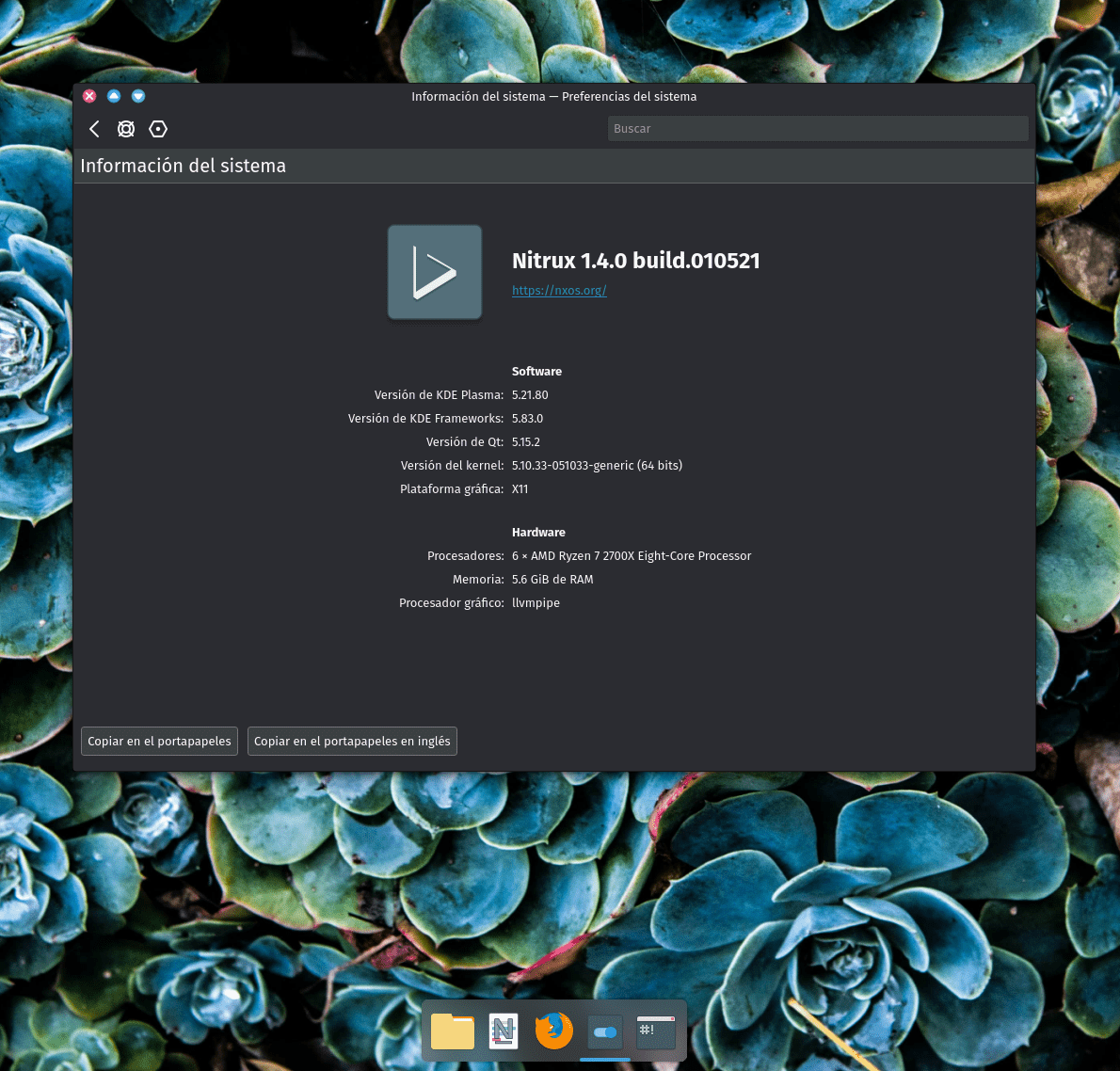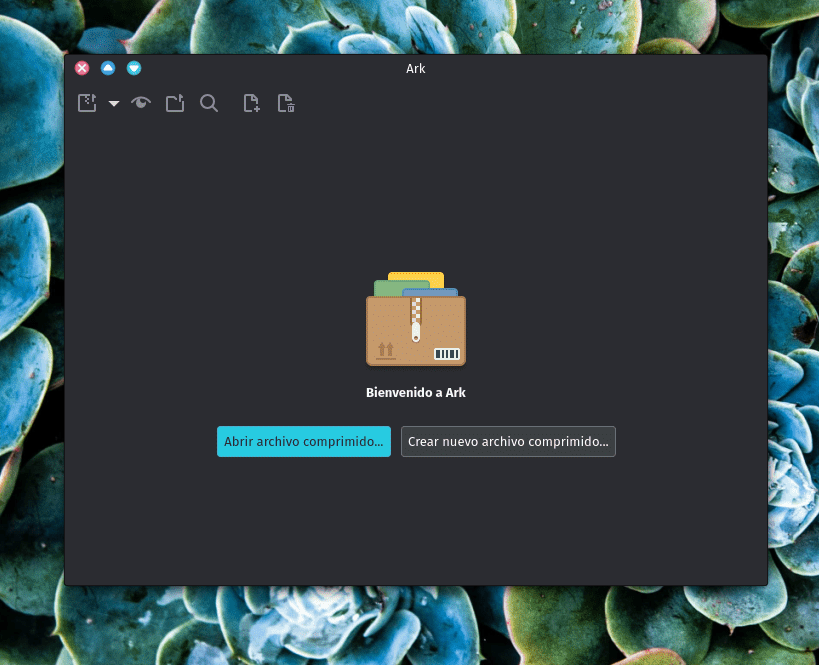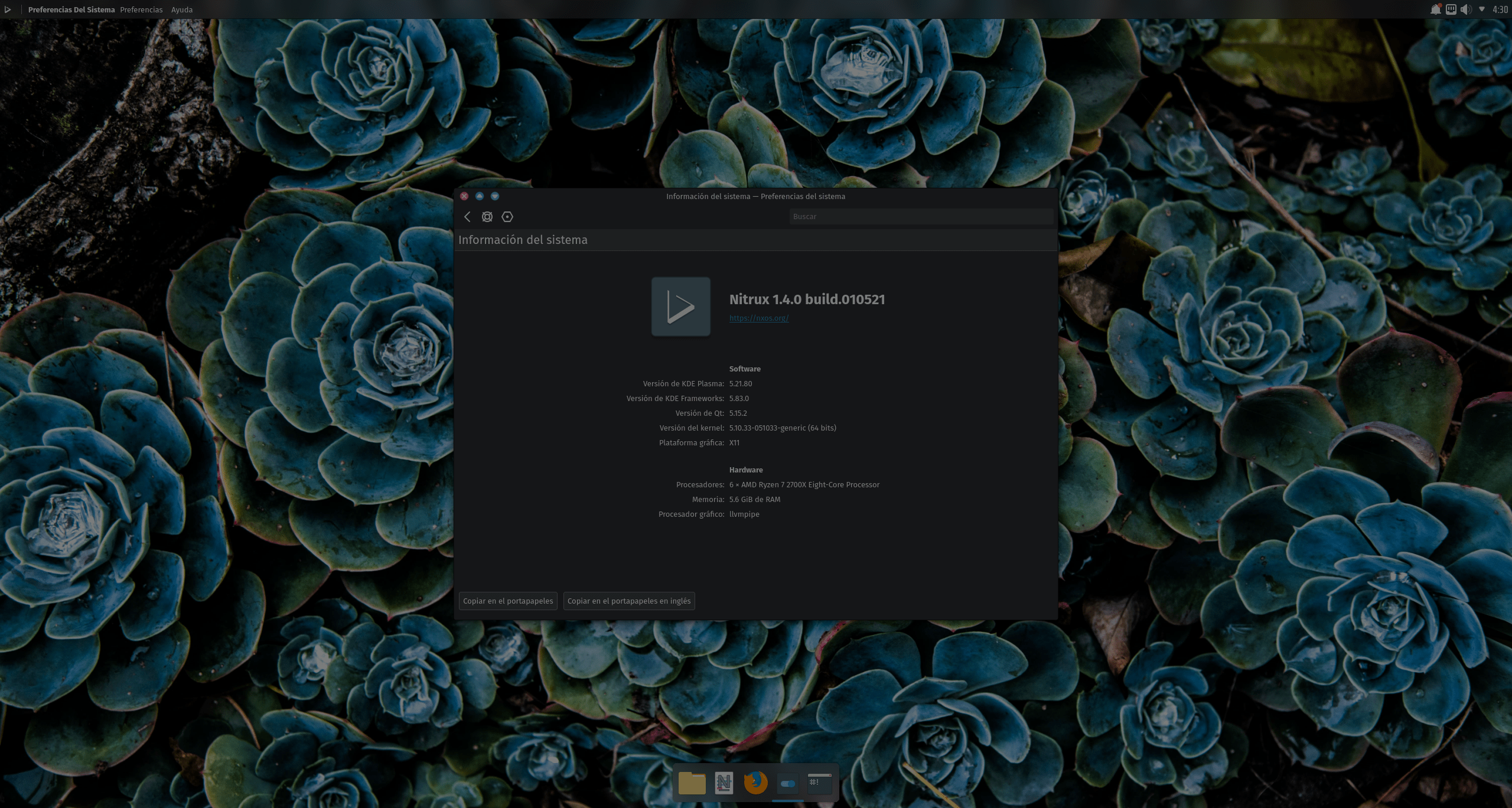Update 01/01/23: We strongly recommend users create a container to experiment using the repositories described in the post below. Please check our tutorial to use Distrobox.
Nitrux is a Linux distribution that offers a relatively up-to-date system, including the latest stable version of Plasma and the KDE Frameworks, which come by default in the distribution. However, it’s also possible to further test the beta releases, and even the Git builds, all thanks to the hard work of the KDE Neon developers. This is fantastic since we can enjoy all the new features the KDE community is working on before they’re tagged as stable, such as the floating dock feature in Latte Dock.
This tutorial will update our Plasma and KF5 Frameworks to the Git builds. It would be best if you only did this at your own risk.
That said, we’ll start by updating to dev/stable and then dev/unstable.

Nitrux 1.4.0 w/ floating Latte Dock.
Difficulty: ★☆☆☆☆
First, we’ll create a copy of the APT sources file we’ll use. To do this, do the following.
-
sudo cp /etc/apt/sources.list.d/neon-user-repo.list /etc/apt/sources.list.d/neon-dev-stable-repo.list
Then, in a Terminal, we’ll use sed to edit the source file and change the repository. To do this, do the following.
-
sudo sed '+s+/user+/dev/stable+g' /etc/apt/sources.list.d/neon-dev-stable-repo.list
Now, we’ll turn off the stable Neon repository (user). To do this, do the following.
-
sudo sed '+s+deb+#deb+g' /etc/apt/sources.list.d/neon-user-repo.list
Then update the package index and proceed to apply the upgrades. To do this, do the following.
-
pkcon refresh && pkcon update
You can now log out and log in to load the new libraries and software.
Finally, we’ll do the same steps, create a new source file and turn off the dev/stable repository.
Create a copy of the APT sources file that we’ll be using. To do this, do the following.
-
sudo cp /etc/apt/sources.list.d/neon-user-repo.list /etc/apt/sources.list.d/neon-dev-unstable-repo.list
Then, in a Terminal, we’ll use sed to edit the source file and change the repository. To do this, do the following.
-
sudo sed '+s+/user+/dev/unstable+g' /etc/apt/sources.list.d/neon-dev-unstable-repo.list
Now, we’ll turn off the dev/stable Neon repository. To do this, do the following.
-
sudo sed '+s+deb+#deb+g' /etc/apt/sources.list.d/neon-dev-stable-repo.list
Then update the package index and proceed to apply the upgrades. To do this, do the following.
-
pkcon refresh && pkcon update
You can now log out and log in to load the new libraries and software. Besides updating Plasma and the KDE Frameworks, you will update the default KDE Gear applications like Ark.

Please be aware that the default source “neon-user-repo” will be overwritten when the package nitrux-repository-config is updated. To avoid mixing packages from the ‘user’ and ‘dev/unstable’ repositories, you must manually disable them.
One more thing…
We believe clarifying the following is essential, as certain websites provide erroneous information to their readers (and our users). Such as stating that Nitrux uses “some packages from Ubuntu (LTS),” as that is misleading and outright omits other information. Nitrux uses some packages from Ubuntu, such as casper, instead of live-boot from Debian and some libraries. However, packages such as Plasma, KDE Frameworks, and KDE Gear are not from Ubuntu or Debian, and other applications that we include are AppImages. Those packages, like casper, do not come from an LTS release of Ubuntu either. The information on this website, which is known for its “distributions ranking,” i.e., a popularity contest rigged by the website staff to cater to whoever they decide to favor, and that, unfortunately, due to the age of this website users put trust in it, does not mention that in reality, most packages come from Debian and Devuan, the latter is specifically omitted entirely from their “description” of our distribution at their website for reasons that we don’t know, which is worth mentioning here seeing that mentioning “some packages from Ubuntu (LTS)” is relevant information to them. And that, unfortunately for us, gets repeated by other websites creating articles about Nitrux and cited by content creators when making videos like reviews. And that includes their complete lack of understanding of how packages work, something of concern for a website that explicitly (though not exclusively) targets Linux users.
- The KDE Neon repository uses the same Suite and Codename names as Ubuntu; that’d be “focal” in this case. As is, our repository uses our naming conventions; nonetheless, it would be disingenuous to say that if it were the case that our repository also used “focal,” it would be an Ubuntu repository, as this website seems to imply about the KDE Neon repository.
- The KDE Neon developers also use a custom version string for their packages, e.g., “5.81.0-0xneon+20.04+focal+release+build20,”. In contrast, the packages from Debian are versioned like this “5.81.0,” either way, both packages are the exact version of the same software. Likewise, we use a custom version string, such as adding “+nitrux.” However, as before, it’d be disingenuous to say that if we created a package and this package had a version string that contained something like “+dfsg,” which stands for DebianFreeSoftwareGuidelines, which is often used in packages from Debian, that the package that we made is a package coming from Debian or exclusively for Debian, even if we were the ones who created it and it worked anywhere.
- The KDE Neon repository is entirely independent of any Ubuntu infrastructure, and the Ubuntu maintainers do not manage it. Also, as far as we know, KDE Neon is not part of the Ubuntu family of distributions as Kubuntu, nor does Canonical directly employ or support the KDE Neon developers, as Canonical may do with Kubuntu, for example, by providing the distribution with infrastructure or technical advisory.
- The KDE Neon developers do compile their packages against libraries, compilers, and binaries found in Ubuntu repositories, specifically, Ubuntu LTS repositories; Nonetheless, strictly speaking, it’s not an Ubuntu repository; it is a Debian (as in the package format) repository; to avoid confusion, let’s call it an APT repository. To further exemplify this, Launchpad PPAs are often associated with Ubuntu, and Canonical manages Launchpad, yet these PPAs can be used in Debian because they are not Ubuntu repositories; they are APT repositories. And as we have proved, as long as dependencies are satisfied regarding the package manager, the KDE Neon packages can be used in Debian (as in the distribution), just like our packages could be used in other distributions. Not to mention satisfying runtime libraries such as the GNU C library. So, the packages from KDE Neon are not specifically for Ubuntu or come from an Ubuntu LTS repository.
We understand this information is irrelevant for most people, as Nitrux is a “young” distribution (but not new), while that website is decades old. If they say Nitrux=Ubuntu, that’s what people will believe. Unlike this website, however, we’re transparent in how we make our distribution. And while initially, Nitrux was built using an Ubuntu rootfs and included Ubuntu repositories, that is no longer the case since the weeks before the public release of Nitrux 1.3.9 on March 30, 2021.
However, this is just one of the problems we have with this website. A website that also falsely claims that our distribution was not available before “mid-2020”.
That’s it; this concludes today’s tutorial.
